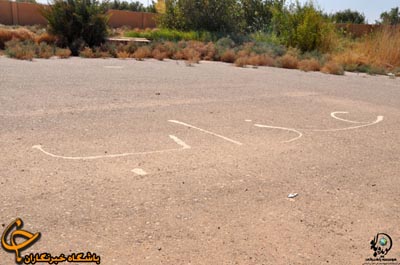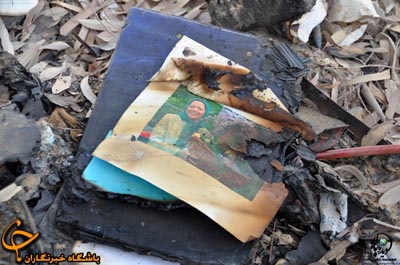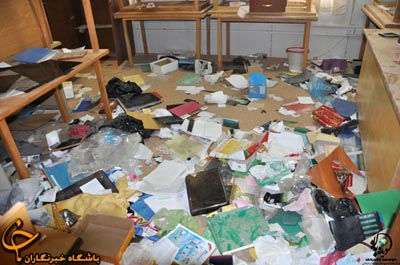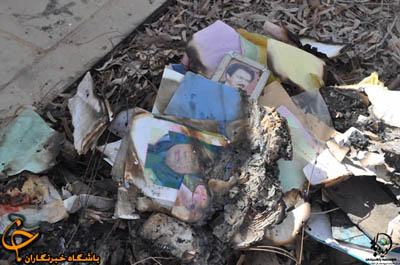Iraqi officials announced on Sunday that they have found the bodies of a large number of Iraqi citizens and officials slain by the terrorist Mojahedin-e Khalq Organization (MKO, also known as the MEK, PMOI and NCR) in a mass grave in MKO’s Camp Ashraf in the Northern Diyala province.
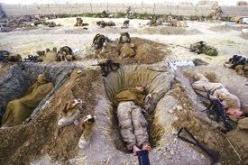 "As proofs and evidence show, the corpses of Iraq’s Shiite citizens, officials, officers, sheikhs and religious scholars have been buried in the mass grave," a high-ranking Iraqi political source said in an interview with al-Mustaqbal al-Iraq news agency.
"As proofs and evidence show, the corpses of Iraq’s Shiite citizens, officials, officers, sheikhs and religious scholars have been buried in the mass grave," a high-ranking Iraqi political source said in an interview with al-Mustaqbal al-Iraq news agency.
He said that the corpses belong to the people who were killed by the MKO from 2006 to 2009.
An Iraqi official had informed in early January that several mass graves had been unearthed in Camp New Iraq, formerly known as Camp Ashraf, in the Diyala Province, which was the headquarters of the terrorist MKO before a majority of the group members were transferred to Camp Liberty around Baghdad a few months ago.
Sadeq al-Husseini, the deputy chairman of Diyala’s provincial council, added that the Iraqi Ministry of Human Rights was in charge of determining the identities of the bodies and whether they were Kurds, the residents of southern provinces or from the town of Khalis in Diyala Province.
He said that the bodies were being examined in medical laboratories in Arbil Province, adding that human rights violations in the camp did not seem improbable.
The MKO is behind a slew of assassinations and bombings inside Iran, a number of EU parliamentarians said in a recent letter in which they slammed a British court decision to remove the MKO from the British terror list. The EU officials also added that the group has no public support within Iran because of their role in helping Saddam Hussein in the Iraqi imposed war on Iran (1980-1988.)
Many of the MKO members abandoned the terrorist organization while most of those still remaining in the grouplet are said to be willing to quit but are under pressure and torture not to do so.
A May 2005 Human Rights Watch report accused the MKO of running prison camps in Iraq and committing human rights violations.
According to the Human Rights Watch report, the outlawed group puts defectors under torture and jail terms.
The group, founded in the 1960s, blended elements of Islamism and Stalinism and participated in the overthrow of the US-backed Shah of Iran in 1979. Ahead of the revolution, the MKO conducted attacks and assassinations against both Iranian and Western targets.
The group started assassination of the citizens and officials after the revolution in a bid to take control of the newly established Islamic Republic. It killed several of Iran’s new leaders in the early years after the revolution, including the then President, Mohammad Ali Rajayee, Prime Minister, Mohammad Javad Bahonar and the Judiciary Chief, Mohammad Hossein Beheshti who were killed in bomb attacks by MKO members in 1981.
The group fled to Iraq in 1986, where it was protected by Saddam Hussein and where it helped the Iraqi dictator suppress Shiite and Kurd uprisings in the country.
The terrorist group joined Saddam’s army during the Iraqi imposed war on Iran (1980-1988) and helped Saddam and killed thousands of Iranian civilians and soldiers during the US-backed Iraqi imposed war on Iran.
Since the 2003 US invasion of Iraq, the group, which now adheres to a pro-free-market philosophy, has been strongly backed by neo-conservatives in the United States, who argued for the MKO to be taken off the US terror list.
The US formally removed the MKO from its list of terror organizations in early September, one week after Secretary of State Hillary Clinton sent the US Congress a classified communication about the move. The decision made by Clinton enabled the group to have its assets under US jurisdiction unfrozen and do business with American entities, the State Department said in a statement at the time.
MEK Camp Ashraf
Camp Ashraf was Rajavi’s ideal and practical milieu for thought reform techniques
As one among many of the psychological techniques used to control the minds of the insiders 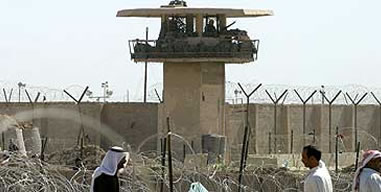 under the tag of ideology, MKO inaugurated the ideological revolution to introduce a charismatic authoritarian leader to exert control over every aspect of his adherents’ life and to establishing a totalitarian pyramidal structure where the chosen devoted commanders would act as the leader’s deputies in his absence. But the leader needed certain facilities to implement the newly devised mind control. The most important prerequisite was of course a remote place isolated from the outside world to disconnect the contact of their followers from the outside world, particularly from their families and friends and even from their past. To phrase it in technical terms, MKO was desperately in need of a cultic milieu, the most central in creating the thought reform environment as depicted by Robert Jay Lifton:
under the tag of ideology, MKO inaugurated the ideological revolution to introduce a charismatic authoritarian leader to exert control over every aspect of his adherents’ life and to establishing a totalitarian pyramidal structure where the chosen devoted commanders would act as the leader’s deputies in his absence. But the leader needed certain facilities to implement the newly devised mind control. The most important prerequisite was of course a remote place isolated from the outside world to disconnect the contact of their followers from the outside world, particularly from their families and friends and even from their past. To phrase it in technical terms, MKO was desperately in need of a cultic milieu, the most central in creating the thought reform environment as depicted by Robert Jay Lifton:
“The most basic feature of the thought reform environment, the psychological current upon which all else depends, is the control of human communication. Through this milieu control the totalist environment seeks to establish domain over not only the individual’s communication with the outside (all that he sees and hears, reads or writes, experiences, and expresses), but also – in its penetration of his inner life – over what we may speak of as his communication with himself. It creates an atmosphere uncomfortably reminiscent of George Orwell’s 1984.”
Initially, a place had to be found to meet Rajavi’s needed features for the thought reform environment, a place totally cut and isolated from the modern world. But Rajavi had already made his decision on the place even before the initiation of the ideological revolution when he met with Iraq’s Foreign Minister, Tariq Aziz, on 9 January 1983 in France. Consequently, grabbing at the granted opportunity to enhance close relations with Saddam and Iraq’s Baath Party, Rajavi made his flight to Iraq after the French government pressed the organization to leave the country’s soil. To justify his relocation to Iraq, Rajavi reportedly announced that he had decided to settle in Iraq as it was a strategic site to carry out operations aimed to overthrow Iranian regime.
He moved to Iraq at a time when the Iraqi forces had many kilometers of Iranian lands under their boots, a move that none of the opposition could tolerate. No doubt, MKO was empty handed when it arrived in Iraq in 1986 and in need of aid. Rajavi’s consequent meeting with Saddam and then with other Iraqi ranking officials followed with dollar allocations as well as granted military camps and logistics boosted a broad collaboration that lasted until the fall of Saddam. Settled in Iraq, the members were forced to stay on military compounds, the biggest one being Camp Ashraf.
In fact, when Saddam in 1986 granted Camp Ashraf to MKO, it was nothing more than a piece of wasteland as it is geographically the case with other parts of the region. But Saddam’s granted huge sums of money cut from the pocket of the Iraqi people, and Rajavi’s physical and psychological exploitation of his cult’s victims, turned the scorched piece of land into an oasis that none of the people around it had the right to enter nor to use. Nobody knows the many secrets behind this forbidden land; nobody knows the whereabouts of those who entered the mysterious stronghold and never came out; it is full of souls who are claimed to have died of unknown causes, suicides, heart or brain stroke, cancers and self-immolation. Under any brick and stone you can come upon scores of men’s lost lives, wills and wishes. And nobody forgets many instances of the confirmed unearthed mass graves reflected in the Iraqi media.
Once Dr. Ali Shariati, the late Iranian thinker, in one of his books entitled “Ye Brother, That’s The Way it Was” written soon after his return from Egypt, related the sad history of how the Great Pyramids had been built. He regretted that what people appreciated as wonders were the product of many victimized, oppressed people who had been brutally exploited by the pharaohs to build the wonders. Neither Rajavi is to be compared with the Pharaohs nor the Pyramids with the Ashraf nor the latter’s victims with the former’s. But, it is rather a shame to witness such things happening just in the modern third millennium. And the history is repeated just in the heart of Iraqi deserts where “the pearl of the desert”, as some locals call Ashraf, emerged out of some land hardly you can chance upon green life. It has been repeatedly stated that Rajavi is the one who has openly raised the slavery flag over his bastion with no clear objection to it. His victims are the laborers who are enslaved physically and psychologically; they have to work for him and worship him as well.
Besides providing an ideological bastion for cultic practices and total disconnection of the insiders from the outside world, MKO needed a strategic bastion as it was an armed organization at war with Iranian regime. Strategically, MKO needed a military base close to Iranian borders for training and a military depot for substantial munitions especially after the formation of the so-called National Liberation Army (NLA). And from a political point of view, MKO regarded Ashraf as the symbol of power and resistance in its propaganda campaign for certain reasons, to impress Iranian and non-Iranian supporters and western politicians and also to recruit new members by a superficial depiction of a utopia.
Mass grave in Camp Ashraf contains executed Mojahedin Khalq leaders and cadres
After weeks of investigation at the now empty former camp of the terrorist Mojahedin Khalq
 |
| Izzat Ebrahim and Massoud Rajavi still at large |
organisation, Diyala Provincial Council reported that another mass grave has been unearthed in Camp Ashraf. According to this report, the MEK has executed a number of its leaders and cadres and buried them in Camp Ashraf.
President of the Diyala Provincial Council Mr. Taleb Mohammed Hassan confirmed that the remains of some bodies found inside the grave belonged to people who died of natural causes, and there are people buried inside the camp after the MEK executed them presumably because of their dissent.
Parliamentary sources have previously reported that the remains of Kurds had been discovered in Camp Ashraf in a mass grave. In this case, Diyala Provincial Council said the remains now uncovered are those of the members of the MEK itself and do not relate to any other persons.
An Iraqi official says several mass graves have been unearthed in Camp New Iraq, formerly known as Camp Ashraf, in Iraq’s Diyala Province, which was the headquarters of the terrorist  Mujahedin-e Khalq Organization (MKO).
Mujahedin-e Khalq Organization (MKO).
Sadeq al-Husseini, the deputy chairman of Diyala’s provincial council said that the Iraqi Ministry of Human Rights was in charge of determining the identities of the bodies and whether they were Kurds, the residents of southern provinces or from the town of Khalis in Diyala Province.
He said that the bodies were being examined in medical laboratories in Arbil Province, adding that human rights violations in the camp did not seem improbable.
The MKO is responsible for numerous acts of terror and violence against Iranian civilians and officials.
The group fled to Iraq in 1986, where it received the support of Iraq’s executed dictator Saddam Hussein and set up its camp near the Iranian border.
Out of nearly 17,000 Iranians killed in terrorist attacks since the victory of the Islamic Revolution in 1979, 12,000 of them have fallen victim to the acts of terror carried out by the MKO.
The group also sided with Saddam during Iraq’s eight-year imposed war against the Islamic Republic.

